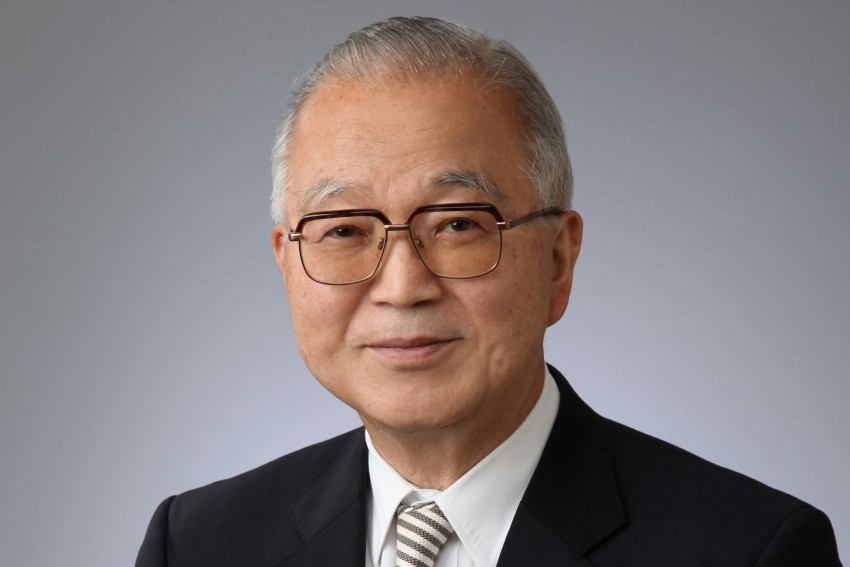|
|
The pioneers of tomorrow’s technology

Dr. Shunpei Yamazaki, President of Semiconductor Energy Laboratory Co., Ltd. (SEL)
Through its devotion to R&D, Semiconductor Energy Laboratory continuously creates the technologies that shape the future of our planet.
One of the pillar technologies of the Fourth Industrial Revolution, Artificial Intelligence (AI) has the potential to radically improve business, living environments, and global health. But like any disruptive technology, AI harnesses potential risks that cannot be ignored – the most talked about, of course, is the impact it will have on jobs.
Another issue to be addressed with AI, which is much less talked about, is related to energy consumption. In order to fully harness the potential of AI technologies in daily life and business, experts say that the current amount of electricity consumption needs to be reduced 1,000-fold. This has led companies to develop technologies – both hardware and software – that can reduce the amount of energy used by AI applications.
One company that is focusing on developing energy-saving hardware is Semiconductor Energy Laboratory Co., Ltd. (SEL). SEL has tasked itself with developing nextgeneration material technology for semiconductors that can replace the ‘complimentary metal-oxide semiconductors’ that are ubiquitous in digital electronics. SEL’s R&D efforts have focused on using ceramic materials to make crystalline oxide semiconductors, devices which can significantly reduce energy consumption.
"One of the rare features of field effect transistors (FETs) fabricated with crystalline oxide semiconductor material (OSFETs) is an extremely low off-state current that has yet to be measured by humankind. Using this feature, extremely low power consumption can be achieved," says SEL president, Dr. Shunpei Yamazaki.
"The OSFET can be considered to be an excellent ‘switch’, as it has a very high on/off current ratio in a wide range of temperatures. This superb switch is an enabler of new memory devices and multiply accumulate operation circuits used in AI."
SEL has developed a number of low-energy devices composed of OSFETs that are applicable to AI, including: DOSRAM (dynamic oxide semiconductor random access memory, see picture), which enables a significant reduction in power as its refresh operation rate is significantly lower than commonly used RAM composed of silicon FETs; NOSRAM (non-volatile oxide semiconductor random access memory, see picture), which operates with lower voltage than silicon flash memories and consumes less power; and NoffCPU (normally off central processing unit), which uses 94 percent less power than standard CPUs.
"Hardware with low power consumption as well as appropriate software to complement the overall system are very important for AI. Semiconductor devices using crystalline oxide enable low power consumption, therefore, DOSRAM, NOSRAM, and NoffCPU developed by SEL are potentially applicable to low-power hardware for AI," adds Dr. Yamazaki.
Looking towards the future, SEL has been developing applications that utilize the extremely low offstate current of OSFET as well as state-of-the-art AI hardware to produce a novel lithium-ion secondary battery control system using OSFETs (BTOS). The current issue with lithium-ion secondary batteries, which are used in many electronic devices such as smartphones and electric vehicles, is that they are commonly at risk of catching fire due to micro-short-circuiting. In order to bypass this, SEL is developing a battery control system that can detect micro short circuits and deal with the problem accordingly thanks to the combination of OSFET and AI hardware. With these developments, SEL hopes to provide devices of high quality, efficiency, and safety to customers around the world.
In addition, SEL has been working on further improvement in lithium-ion battery performance, and has patented technology that promises to reduce battery size, increase capacity, and improve rapid charge and discharge characteristics.
These are just a few of the latest innovations developed by SEL and its founder Dr. Yamazaki. SEL is one of the most unique companies in the world, whose distinctive business model is linked to the commercialization of its outstanding research capacity and its intellectual property cycle. Dr. Yamazaki is famous for holding the largest number of credited patents with well over 11,000 inventions. In 2016, he was awarded by the American Ceramic Society for his outstanding contributions to oxide semiconductor technology and energy-saving display devices through his numerous inventions.
*OSFET, DOSRAM, NOSRAM, NoffCPU, and BTOS are registered trademarks and a trademark of Semiconductor Energy Laboratory Co., Ltd. in Japan (Japanese trademark registration No. 5519759, No. 5519752, No. 5529056, No. 5519756, and Japanese trademark application No. 2018-097721).
|
|
|
|